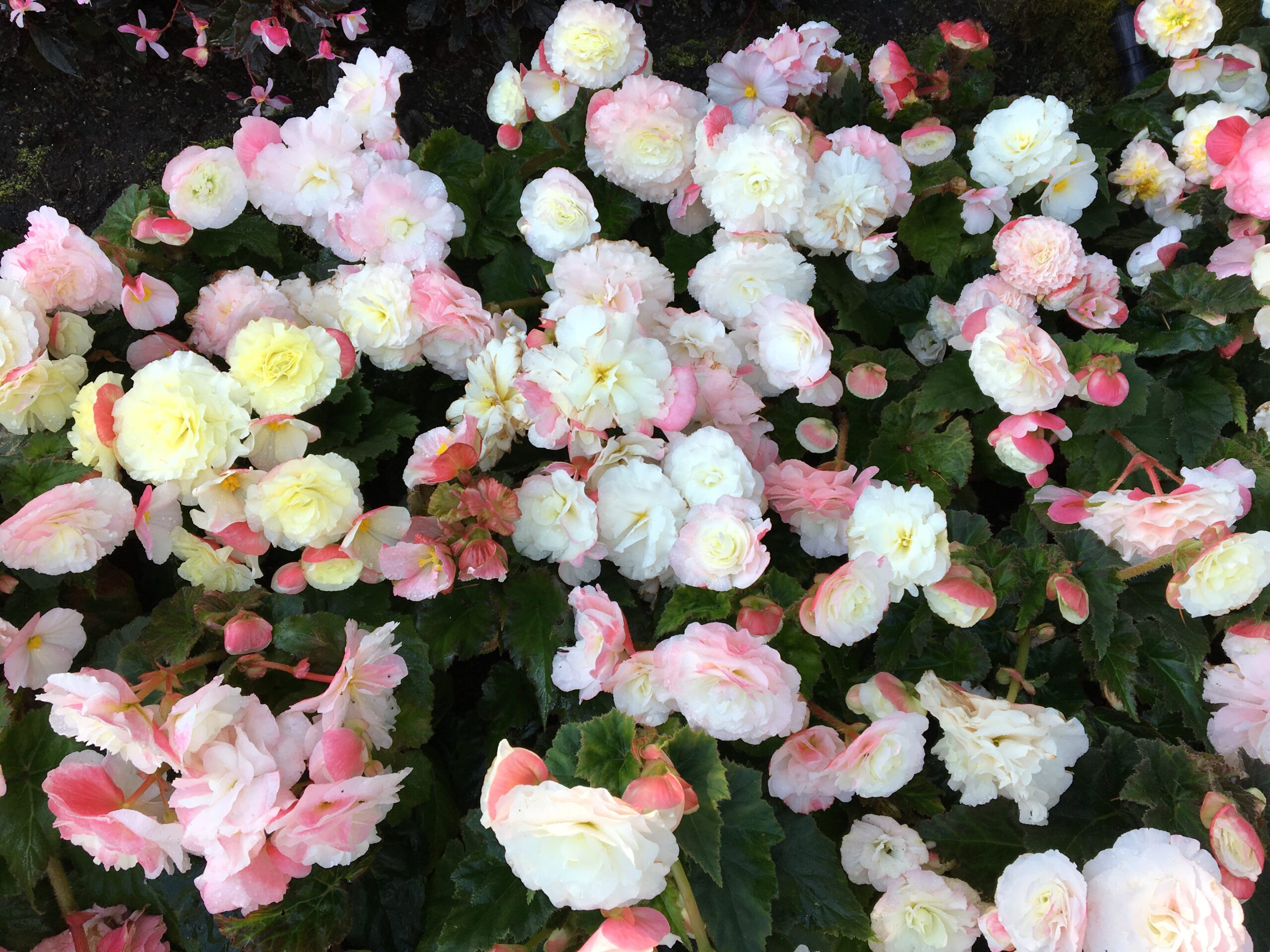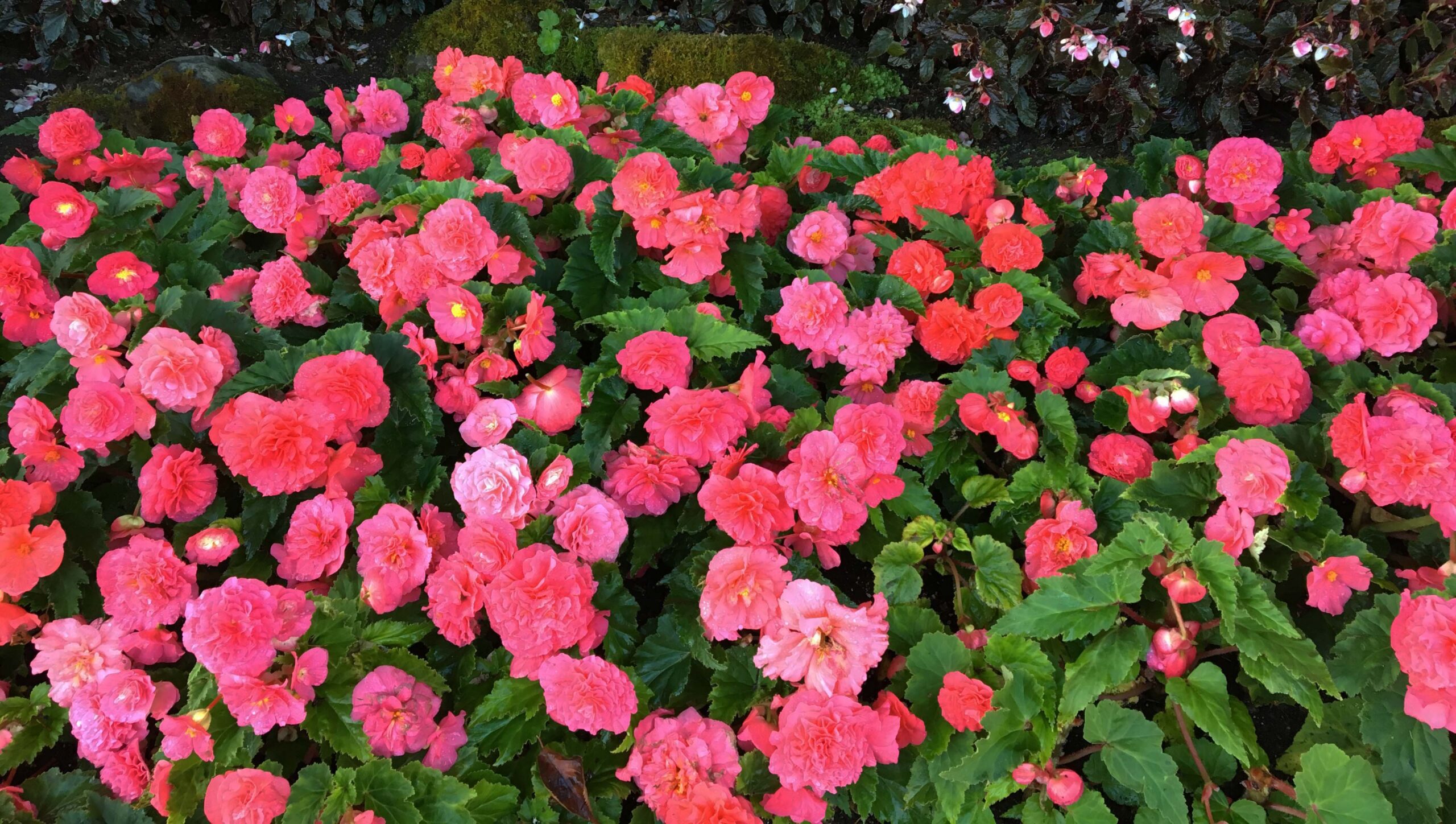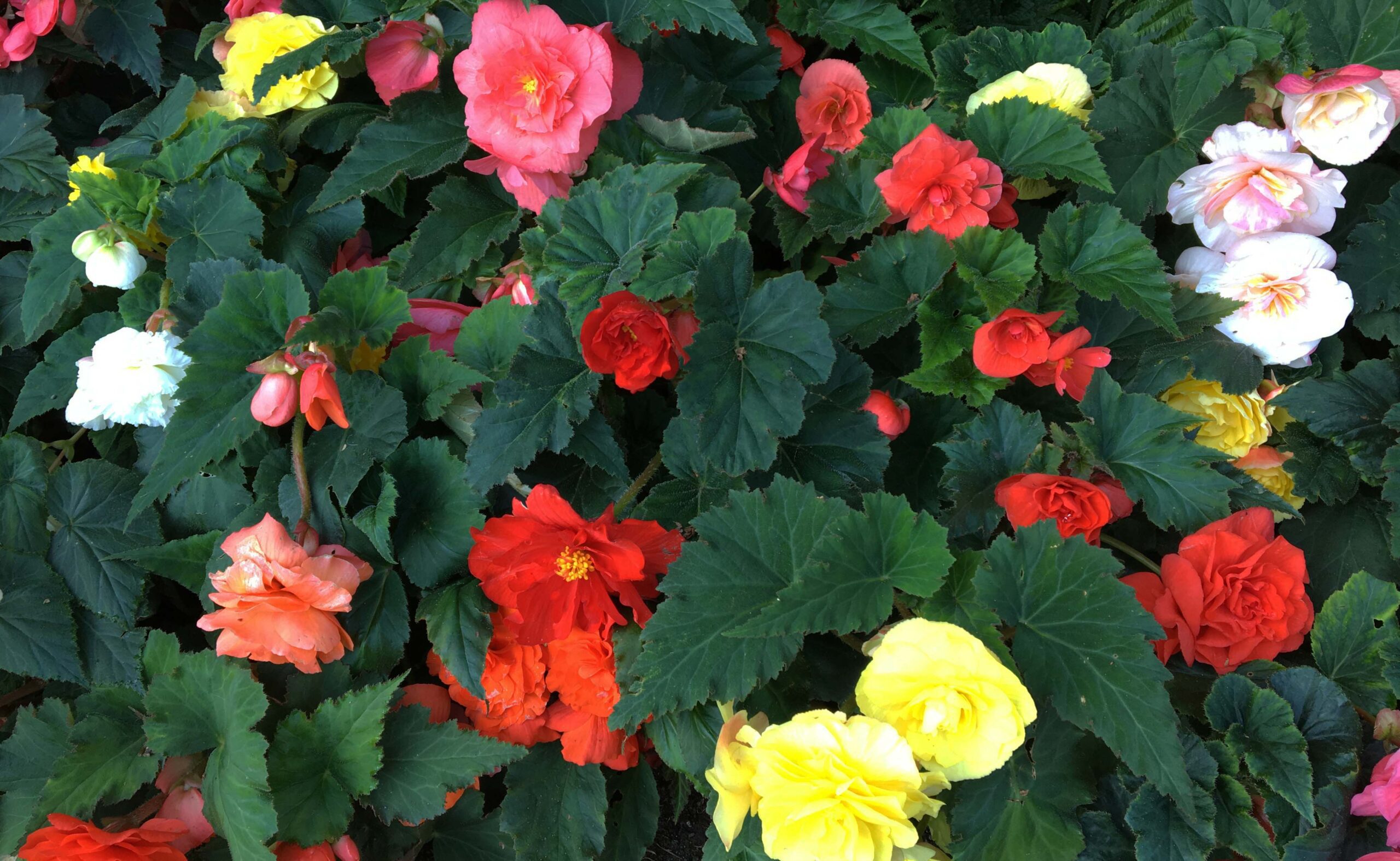SOIL PREPARATION:Tuberous begonias can survive in many types of soils. The most important factor to be considered in preparing any soil for begonia is PERFECT DRAINAGE. A good potting mixture would consist of four parts well decayed mulch (leaf mold or forest humus), one part garden loam, and one part coarse sand. If these components are not available you can purchase a good “potting soil” from your local nursery. The mixture should contain humus, and it should be well drained. Do not use “planting mix”. For outdoor beds it is a simple matter to prepare the average garden soil for tuberous begonias. If you have a heavy clay-type soil which drains poorly, add humus, sand, or both. If your soil is very light or sandy, add leaf mold, peat moss, or some other organic materials. If manure is used, it should be mixed into the soil well in advance of planting time. Fresh manure is not advisable. Large amounts of peat moss are not recommended except in very sandy soils or when used with sand in the mixture. Also you can use “planting mix” or fortified humus to prepare your outdoor beds.
STARTING TUBERS: It is very important that a SPROUT APPEARS before the tuber is planted. If your tubers seem slow to sprout, move them from the cool storage area to a warm dark place. When sprouts appear, the tubers are ready to be planted.
STEP I–Fill a nursery flat or similar shallow container with the planting medium, well rotted leaf mold is recommended. However, there are many satisfactory substitutes. The planting medium should be loose, well drained and it should not contain fertilizer or manure.
STEP II–Space the sprouted tubers evenly in the flat–allowing four to six inches between tubers for root development. Bury the tubers–it is ESSENTIAL TO GOOD DEVELOPMENT THAT TUBERS ARE COMPLETELY COVERED AS THE ROOTS DEVELOP FROM THE TOP AND SIDES OF THE TUBERS.
STEP III–Water carefully. The flat should be lightly but thoroughly watered so that the medium is uniform moist. DO NOT OVER WATER. Do not allow the planting medium to become wet and some at any time.
STEP IV–Place the planted flat in a warm place where it receives filtered sunlight. A temperature of 60-70 degrees is ideal. The flat should not be watered again until the surface of the soil begins to show dryness. As the plants develop, they will need water more often and in increasing amounts. It is important to keep the tubers in the flat until the roots are well developed. When the plants have made four or five inches growth and the root mass is well developed, they should be transplanted. Do not allow the plants to become crowded or spindly in the flat.




